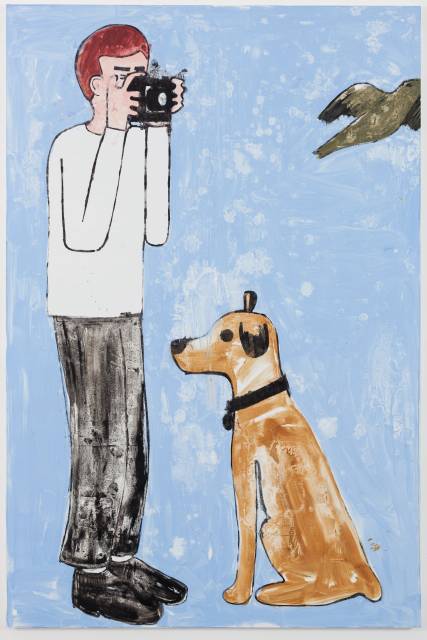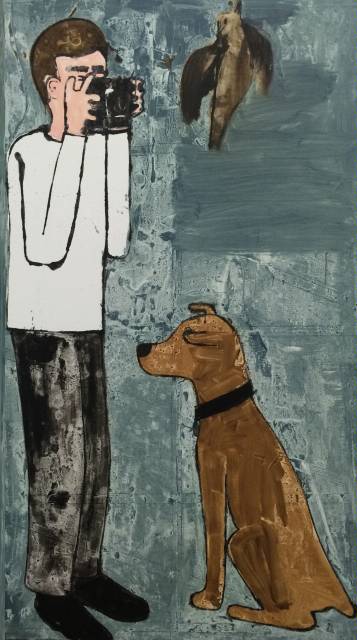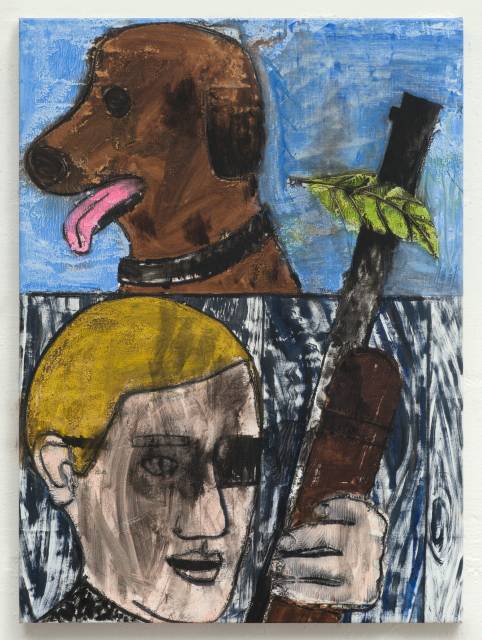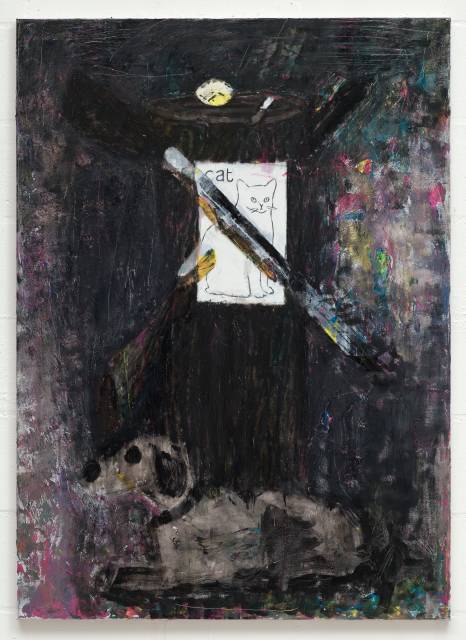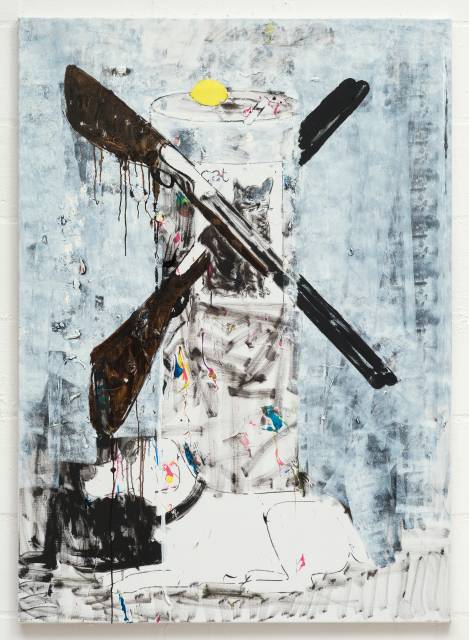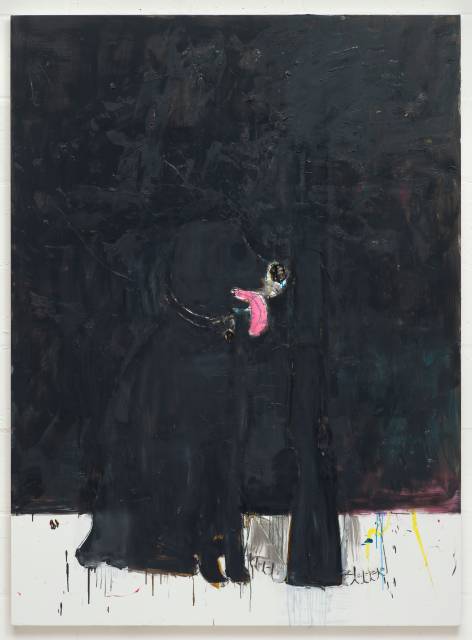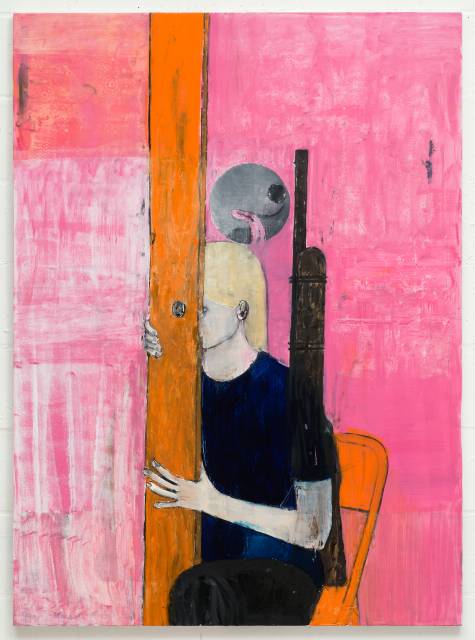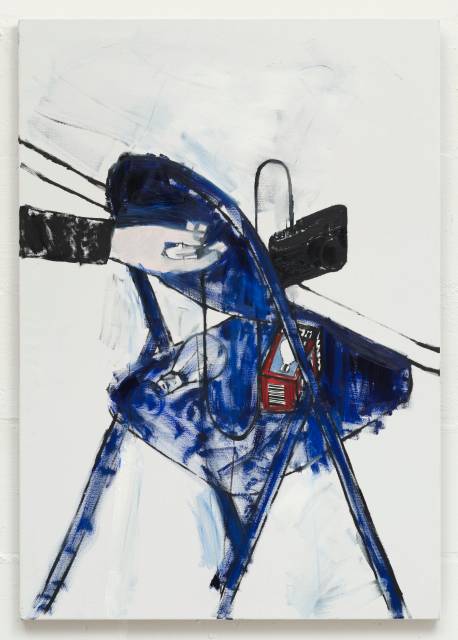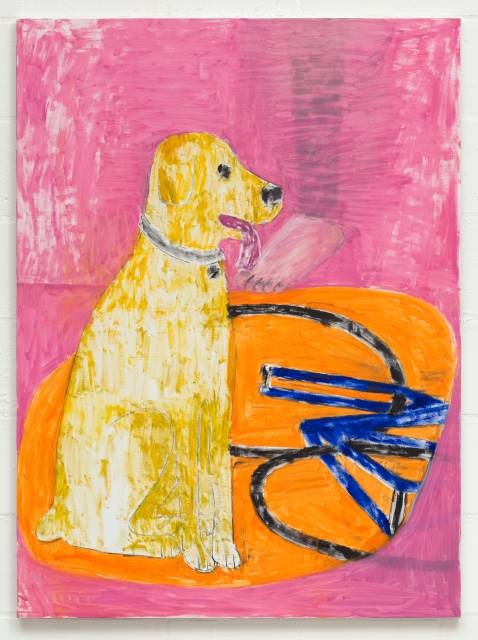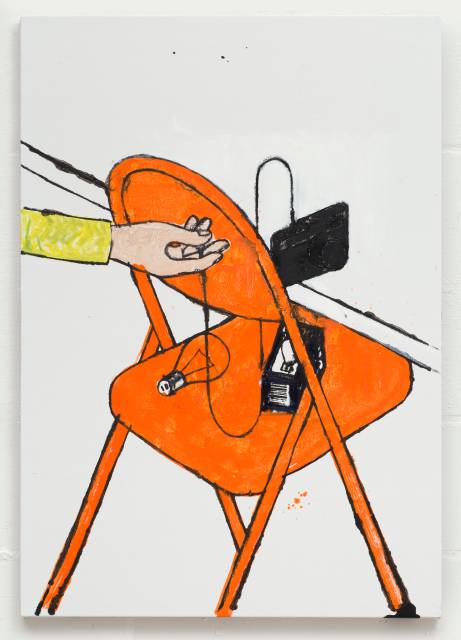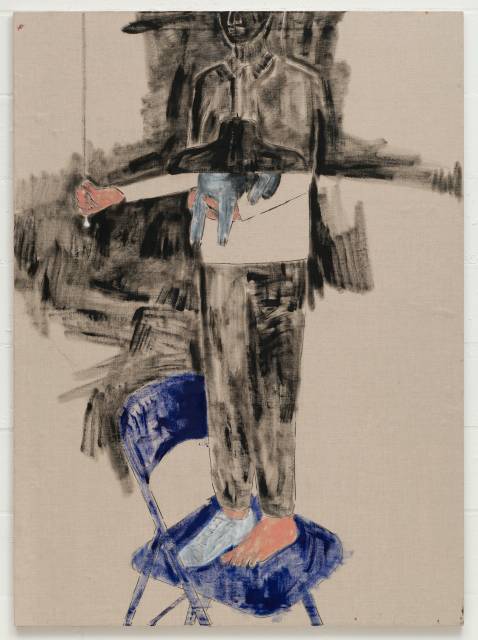Project framework: context, research questions, summary of research insights
My 11 paintings – first exhibited in 2016 in the British Council’s Painting Show in Vilnius and later as Handmade Colour Pictures in London – are portraitshaped canvases, ranging from 80cm to 200cm in height. Resembling how-to guides or children’s books, the works nod playfully to works by Diego Velázquez and Edouard Manet, reinterpreting and reimagining their compositions with modern figures, bold flat colour and – as the Approach Gallery publicity notes put it – “an undertone of dark humour”.
Prior to these exhibitions, my work had been a continuing investigation of the conceptual parameters of painting focusing mainly on abstraction, but I had reached the point where I felt trapped in a circular argument. I needed to step outside the parameters of the medium to find a way forward. Accordingly, I began to consider my work under the broader heading of “pictures”. By opening up the confines of art-historically specified notions of what a painting is and shifting attention to the parameters of picture-making, I hoped to shed light on my practice and rediscover pleasure in looking at and making art.
Context
My project investigates painting’s contemporary significance in the face of the long-running “death of painting” debate, to which Douglas Crimp (‘The End of Painting’, 1981) and Thomas Lawson (‘Last Exit: Painting’, 1981) were notable early contributors – but which was probably most pervasive in the 1990s when video art began to flourish alongside photography in the gallery.
Painting continues, of course; arguably today with a widening appeal among young artists. However, in 2015, when I was making this work, a somewhat mechanical revival of abstractionism was taking place. Viewing it as an attempt to “make undead” a dead medium, the critic Walter Robinson termed it “Zombie Formalism”. Some of my own earlier work could be said to fit that category, which I interpreted as both a validation and the subject’s exhaustion (through saturation).
Conceptual art’s success (post-Marcel Duchamp) in redefining art as anything that happens in a designated art space (galleries, museums and so on) led eventually to the collapse of the idea of art defined by medium – and medium (especially painting) had until that point been used to define art. Contemporary use of paint can therefore be defined as post-conceptual because it shares the above recognition of context over medium, meaning an artwork is no longer grounded in a “like-for-like” comparable relationship of its (own) medium, but within the wider horizon of conceptual practice.
For me, stepping outside the confines of “painting” into the broader context of “pictures” felt like a liberation. A picture, after all, can be made by a wide variety of means, be it camera, computer, hand, imagination or word. It can allow for a greater field of cross-reference, ranging, for example, from the pioneering colour photography of William Eggleston to the Renaissance paintings of Titian and the political cartoons of Steve Bell. All these works can be defined as “pictures” – and thinking in terms of pictures opens out art history instead of reasserting historical boundaries.
Once I had made the shift to pictures, I could take a step back and begin to analyse how pictures work, and it therefore seemed obvious to make pictures about pictures, or, metapictures. Evaluating the history of the metapicture, certain works by Velázquez and Manet, became my touchstones. When Velázquez painted Las Meninas (1656), for example – a metapicture par excellence – he was clearly pointing out that the viewer is looking at a picture fabricated by a specific person (single author in employment of the king). What interested me was the self-consciousness of the picture as a picture. Conceptual art evolved from an argument that art cannot exist without selfawareness: it requires discussion about what art might be, otherwise artists’ creations will be understood, or perceived, as something else.
I wanted to examine the notion of visual pleasure for myself as an artist, but also for the audience, who may not be well-versed in art history. The broad category of pictures enabled me to shun complex allusion and technical flourishes in favour of a simple image accessible to anyone with knowledge of popular culture – the knowledge and experience required to see and read adverts, films and television, which is not to say that an awareness of developments in modern art would be without its uses. But could I, I wondered, through these new pictures, stimulate an active response, in contrast to what I perceive to be society’s increasingly passive reception of new technology and dominant media in their popular formats?
Key questions
The project investigates:
1 Whether conceiving of painting as picturemaking opens up possibilities for painting practice.
2 What subjects can legitimately be explored as “pictures”.
3 The possibilities of painting in the context of post-conceptual art.
Summary of research insights
As a practising artist, I set out to explore the nature of post-conceptual painting: does it exist and, if so, what is it? More importantly, do I make it? Stepping outside the parameters of painting as a medium, I began to think of my work as “pictures” rather than “painting” to widen my frame of reference. I concluded that post-conceptual painting is possible without it being a humanist “return to Painting”, but what remains is a generic form in which paintings exist as objects, their pictorial dimension ignored. As an artist with an interest in psychoanalysis, I have long derived pleasure from the control of an absence-and-presence (“there” and “not there”) duality in my work. I value painting’s pictorial qualities over its objecthood, but the possibility that a work can be both object and picture is one that post-conceptual generic painting (simply a set of signs) is unable to contain.
| Creators | Cumberland, S. |
|---|---|
| Description | The research interrogates post-conceptual painting and repositions it as picture making. Stepping outside the parameters of painting as a medium, drawing on historical references and investigations of contemporary psychoanalysis, |
| Portfolio items | Sensible Signs: Pictures and Not Painting After Conceptual Art |
| The Painting Show | |
| Handmade Colour Pictures | |
| Year | 2016 |
| Publisher | University of Westminster |
| Keywords | Paintings, Postconceptual, Pictures. |
| CREAM Portfolio | |
| Digital Object Identifier (DOI) | https://doi.org/10.34737/qqqz8 |

